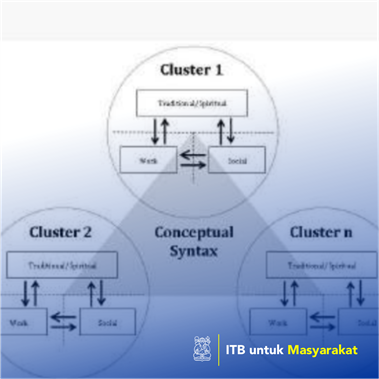

Ruly Darmawan
Observation to this problem can certainly provide many benefits –especially in locating objects of cultural heritage, along with narratives of cultural history– in more proportional contexts. The purpose of this research is to find a model of cultural translation and its possibility to be implemented in any actions in preserving cultural heritage objects, especially in revitalization context. This preliminary model is expected to be used as: 1) a conceptual reference in the planning phase of cultural heritage revitalization, and 2) enriching scientific discourse in design and cultural space. This research was conducted in two steps: field observations and interviews, and theoretical/literature studies. Field observations were first undertaken on the Karangsuwung sugar factory in Cirebon. Karangsuwung sugar factory had been selected due to two main reasons: historical quality of the building (aged more than 100 years old and its functionality as the central of both local and national sugar production) and the existence of a cultural narrative that encompasses the functionalities of the heritage building (local culture and non‐local; native and immigrant). As the second step, literature study focused in cultural theory and its formation through the cross‐cultural contexts. And as the final result, a preliminary model of cultural translation will then be formulated which can be used as an initial guideline in the strategy of revitalizing cultural heritage objects, especially in the early planning phase.
Penerapan Karya Tulis
This research raises the issue of the potential for partiality, even polarity, in cultural heritage objects. So far, efforts in cultural heritage revitalization are considered to be managed improperly considering two things: 1) the distribution of cultural heritage sites in several parts of Indonesia, and 2) the polarity of cultural/traditional value in one single cultural heritage object. These two things need to be examined carefully considering the spectrum of historical narratives in Indonesia which is quite broad/complex, such as prehistoric narratives, age of kingdom narratives, imperialism/colonialism narratives, pre‐independence historical narratives, or post‐independence historical narratives.